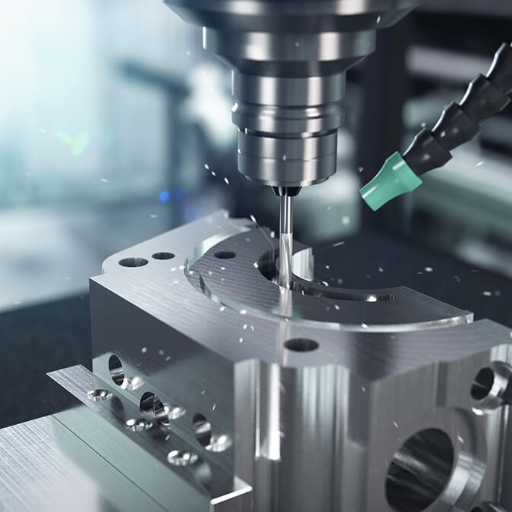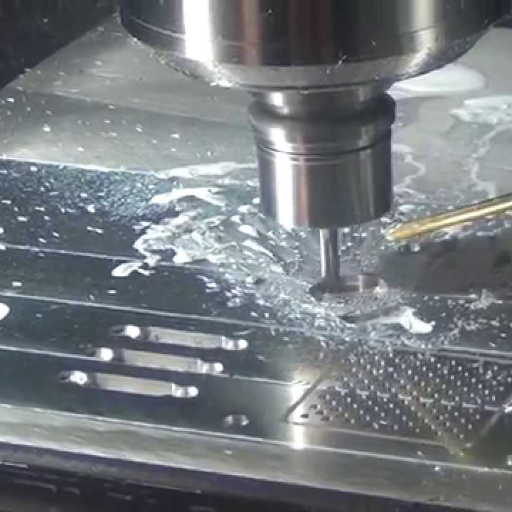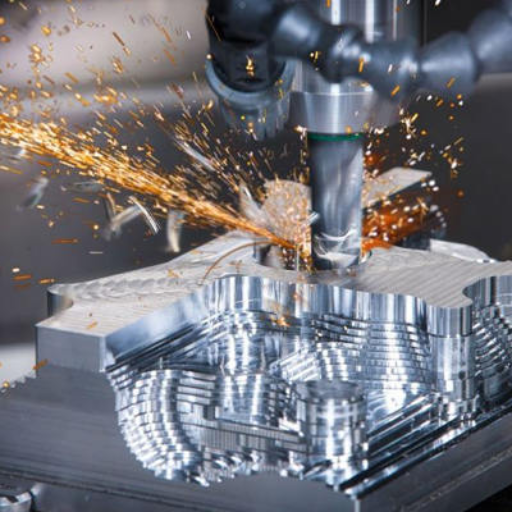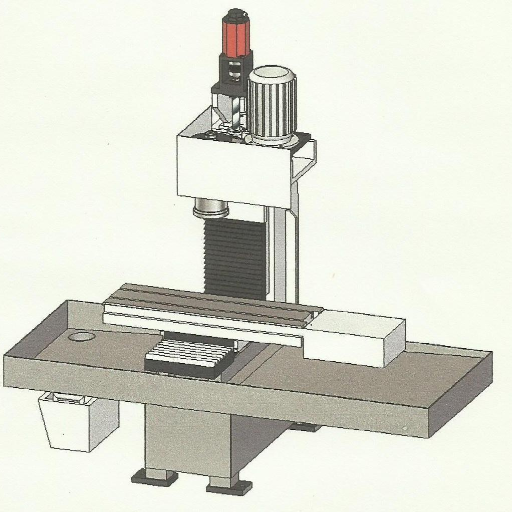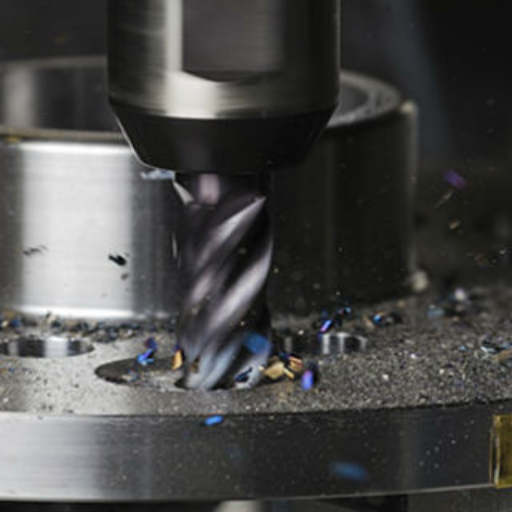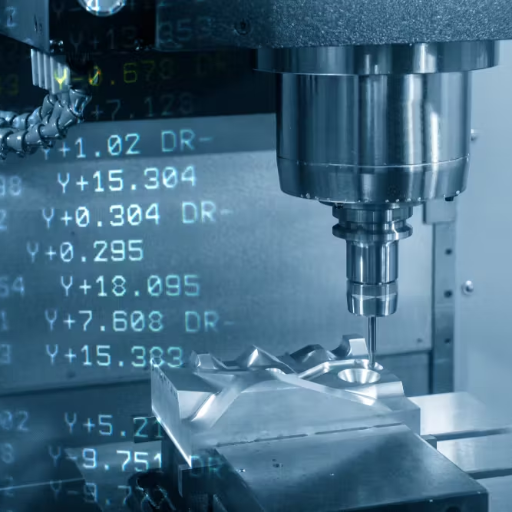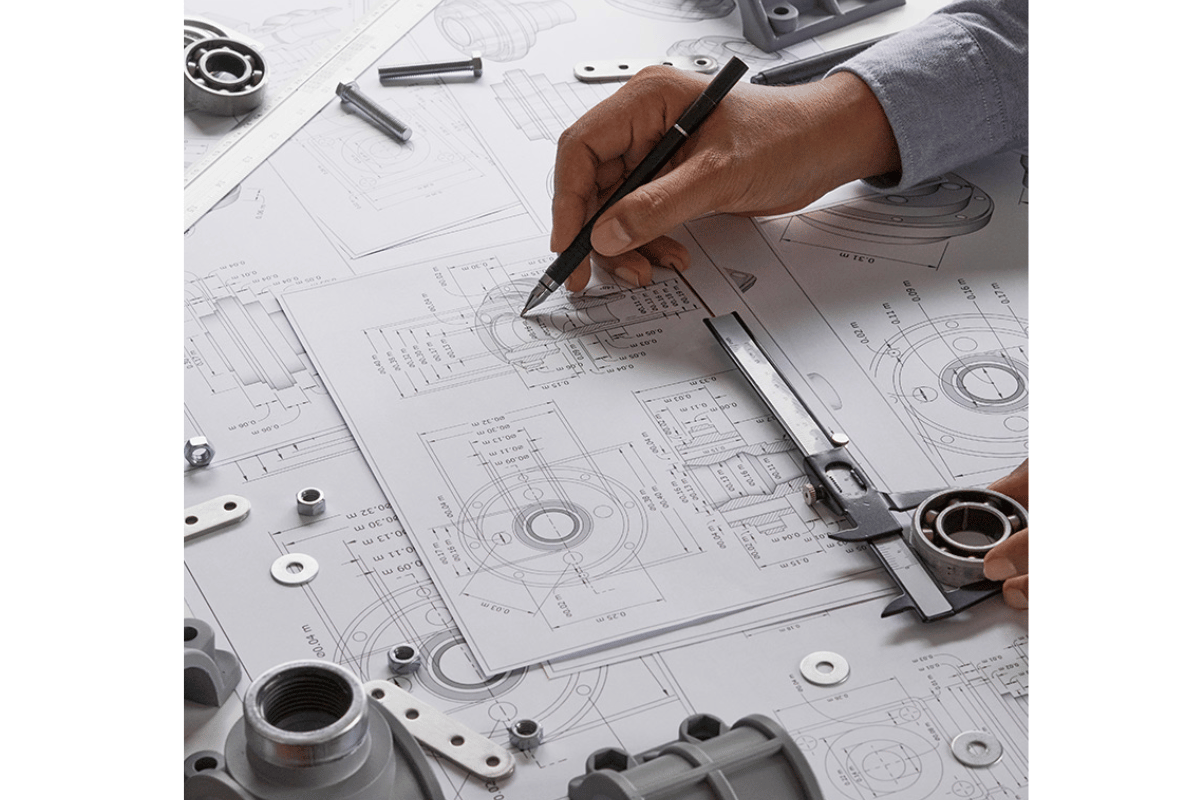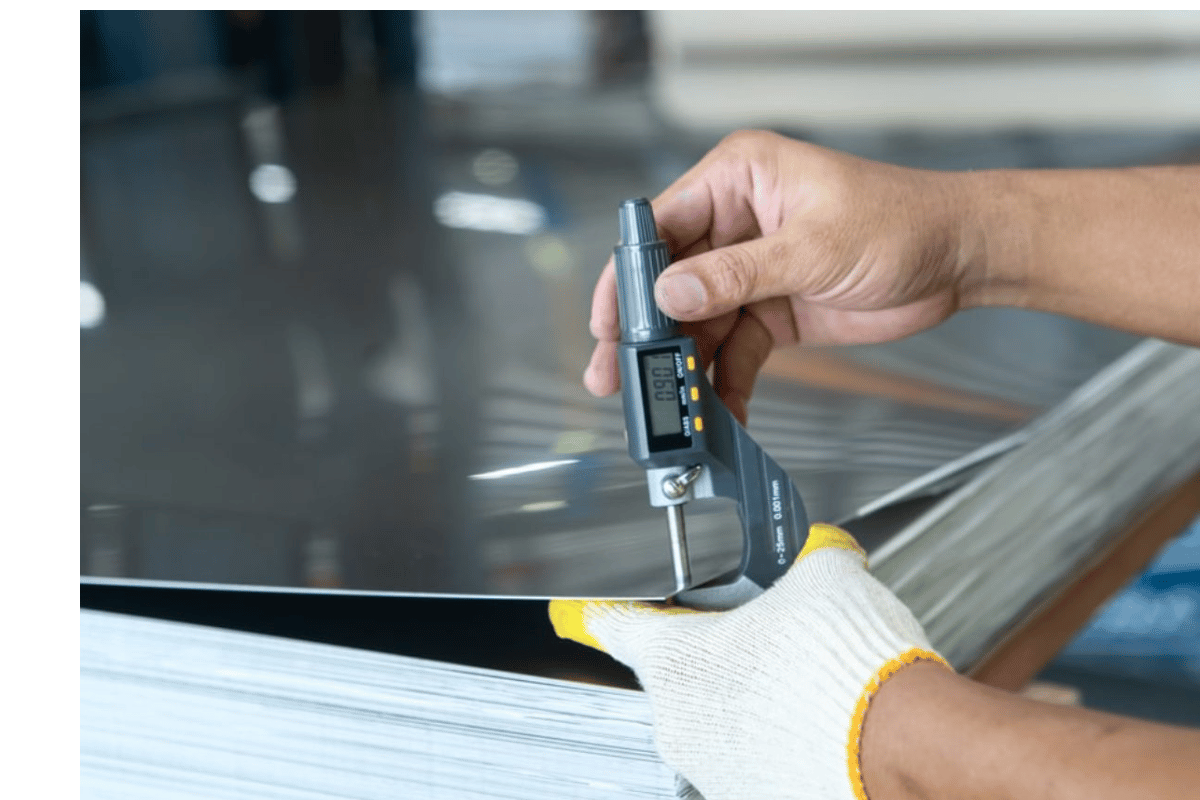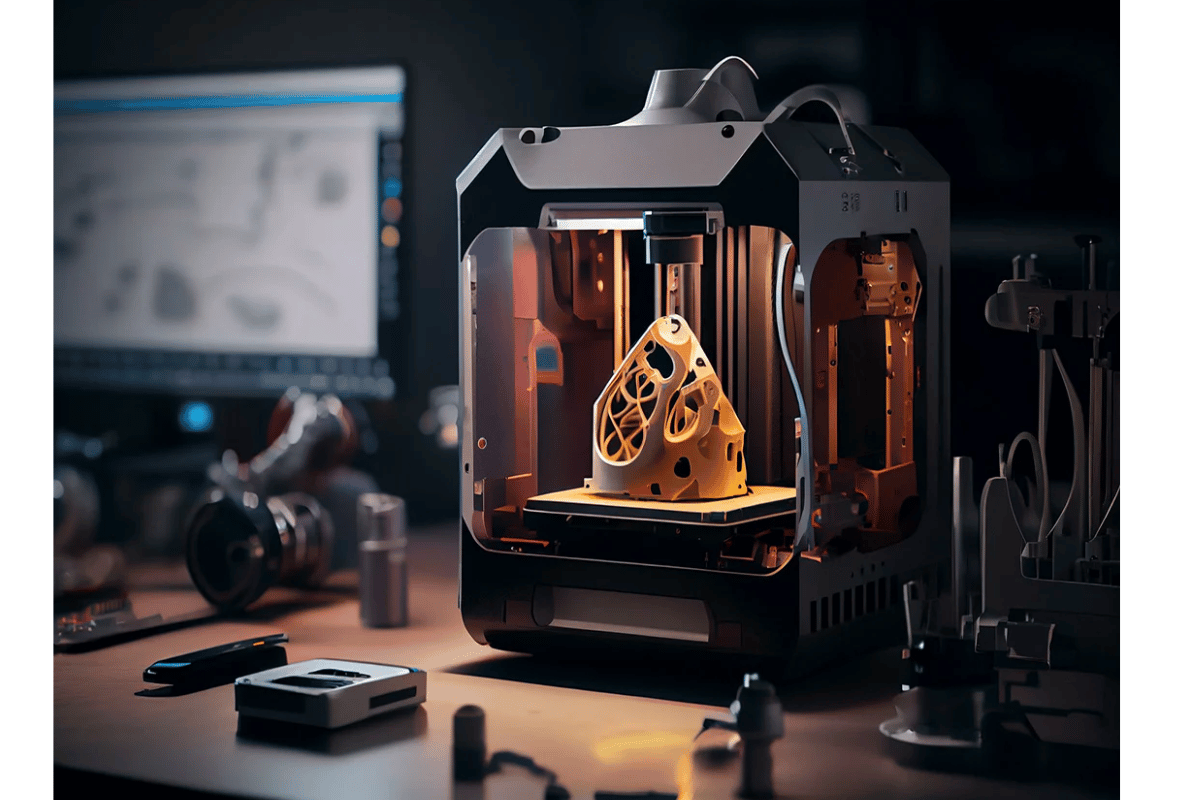Precision and efficiency are absolutely essential in the manufacturing world today. The 3-axis CNC (Computer Numerical Control) machine is a powerful machine used in revolutionizing milling and machining processes. This innovation enables cutting tools to be automatically controlled in three dimensions, thus facilitating designs with unmatched precision. The authors of this blog will therefore provide more insights into the capabilities of 3-axis CNC machines, their applications in various industries and the way they have transformed production workflows. Thus, whether you are a seasoned machinist or just stepped into the CNC universe this article aims to give you an all-around view on how 3-axis CNC machines are molding the future of manufacturing.
What is a 3-Axis CNC Machine and How Does It Work?
Image Source:https://www.google.com
Understanding the Basics of 3-Axis Machining
To move a cutter along three linear axes: X, Y, and Z constitutes 3-axis machining. In terms of my experience, such machines are ideal for drilling, milling and cutting in addition to creating complex shapes and details. For example, the X-axis moves the tool sideways; the Y axis moves it towards or away from the operator and the Z axis raises or lowers it. Therefore, when a 3-axis CNC machine is programmed to do this; that is, change the material into another finished component repetitively but with high accuracy.
Key Components and Functions of a 3-Axis CNC Mill
3-axis CNC mill consists of several key components, which work together and perform milling operations with high precision. Here are some of the essential parts and their functions:
- Frame: It is a structural backbone, which provides rigidity and stability to support machining without vibration or deflection.
- Spindle: This is the rotating part that houses and rotates the cutting tool with variable speed control and high precision bearings for accurate cutting.
- Control Unit: This is usually a computer or a dedicated controller serving as the brain of the CNC mill, interpreting G-code commands to instruct machine operation.
- Axes Motors/Drive Systems: Precision motors (usually stepper or servo motors) attached to each axis (X, Y, Z) that either move the tool and/or workpiece. These motors are driven by digital signals from the control unit.
- Worktable: A movable surface where the work piece in placed for alignment under the cutting tool accurately.
- Cutting Tools: For various machining operations, different types of cutting tools including end mills, drills or lathes are utilized.
- Linear Guides and Ball Screws: These systems enable smooth, precise movements of axes. They help minimize frictional force and backlash hence contributing to milling accuracy.
- Coolant System: For cooling the cutting area thus preventing overheating; washing away chips from between cutter teeth; reducing tool wear;
- Tool Changer: In advanced 3-axis CNC mills automatic tool changing systems allow tools change during working cycles without human intervention thus improving efficiency as well as shortening setup times
- Enclosure: A surrounding guard that encompasses an operational area in order to keep operators safe against moving parts along with debris while keeping coolant liquid plus chips inside it.
Analytical Further Analysis:
- Spindle Velocity: Depending on the material and cutter being used, spindle speeds can vary from a few hundred to several tens of thousands RPMs (revolutions per minute).
- Motor Torque and Accuracy: Servo motors generally provide more torque and precision than stepper motors, with the ability to achieve resolutions as fine as 0.0001 inches.
- Ball Screw Pitch: For speed versus power transmission optimization purposes, it is common for pitches around 5-10 mm to be employed.
These parts work together on three-axis CNC milling machines which are capable of producing accurate, repeatable parts in a wide variety of materials such as metals, plastics or composites. Knowing what these different components do–and don’t do–can help users better understand how limited or advanced their current 3 axis CNC mill might be.
The Role of CNC in Modern Manufacturing
The use of CNC technology has brought about a radical change in the global manufacturing industry by making it more efficient, accurate and scalable. As I have gathered from credible sources, complex and repetitive tasks can be automated through this technology such that previously labor-intensive processes are now completely eliminated, thus ensuring minimal mistakes and releasing workers for other productive duties. These machines are capable of processing different materials with unprecedented precision that is vital for fields like aerospace, automobile or electronics calling for extreme exactness. Besides, the versatility of CNC technology allows to create prototypes quickly as well as to make flexible production batches adjusted to design changes at once without any substantial downtime. This flexibility not only reduces cycle times but also optimizes resource utilization making CNC an indispensable tool in modern manufacturing.
Comparing 3-Axis, 4-Axis, and 5-Axis CNC Machines
What’s the Difference Between 3-Axis, 4-Axis, and 5-Axis CNC?
Concerning such a comparison of 3-axis, 4-axis, and 5 axis CNC machines, there is a major difference in terms of how many ways their cutting tools can move. A good example is a three-axis CNC machine which moves the tool along three linear axes: X Y and Z. It is ideal for operations on flat surfaces since most of the work can be done without the need to tip over or adjust orientation.
To introduce an additional rotational axis (usually A-axis) making it four, cutting tool rotates around the X-axis in a four axis cnc machine. This extra degree of motion allows more intricacy as parts can be machined from multiple sides that requires one to manually reposition.
Furthermore, by moving up to five axes on a CNC machine; this has seen addition of another fifth rotation axis like B moves enabling it also to tilt. For instance, complex objects like turbine blades and medical implants require intricate angles and contours; thus making this machine flexible offering unparalleled precision.
Each incremental increase in axes allows for more sophisticated machining capabilities, reduced setup times, and enhanced accuracy, making the choice of machine highly dependent on the complexity of the projects in question.
Main Advantages of Using Higher Axis Machines
Firstly they present superior machining flexibility plus precision that is crucial when creating intricate complex components.The setup time needed for 4-axis and 5-axis machines is significantly lower as there are no needs for repositioning by hand.This means both efficiency increases while time gets saved.Moreover these devices offer better surface finishes as well as detailed geometries which are very essential in aerospace or medical manufacturing sectors.Even so improved production stability as well as accuracy result into better quality products to meet very strict specifications and standards.
Choosing the Right CNC Machine for Your Project
To select the right CNC machine for your project, you have to know what you want in terms of machining, budget and production. Here are some important points that should help make up your mind:
The first point is assessing how complex your project is. Three axes may be enough if the parts are simple. However, four-axis or even five-axis machines should be thought of when there is need for more intricate geometries and fine works like details as they can produce complex contours and angles thus lower manual intervention and setup times.
Secondly, take into account what you will be cutting with them. As can be seen, higher axis machines provide better versatility and precision on harder materials which result in improved surface finish and accuracy. Also consider your yearly output. High-axis CNC machines simplify operations hence increasing efficiency which is useful in high volume manufacturing.
Lastly consider the cost implication involved here because high axis machines are expensive though they come with superior capabilities. Weighing all these factors will help one decide on the most efficient machine that can still do a great job at an affordable price.
The Benefits of Using a 3-Axis CNC Machine in Manufacturing
Image Source:https://www.google.com
Making Milling Operations More Precise and Efficient
I can explain in brief how to improve precision and efficiency in milling operations using a 3-axis CNC machine. For one to be more precise, it is vital that they regularly calibrate their machines and carry out maintenance checks. This will ensure that the machine works within the desired tolerance levels. The use of quality tools with sharp cutting edges too contributes significantly towards attaining accurate results. To increase output, it requires optimizing feed rates and cutting speeds based on materials being machined. Furthermore, toolpath optimization software can also help in reducing machining time while maintaining its accuracy. By focusing on these critical areas therefore you are able to achieve higher accuracy as well as efficiency when milling with a 3-axis CNC machine.
How 3 Axis CNC Machines Optimize Production Costs
Primarily, there is reduction in human labour due to automation brought about by these machines thus reducing employment costs. As a result, man’s intervention decreases because most repetitive tasks are automated thereby leading to reduced labor expenses. Additionally, three axis CNC machines have high precision so that they minimize material wastage and avoid reworking efforts as much as possible hence conserving materials optimally hence mitigating waste resources and related costs Ultimately, such machines are capable of running continuously which raises their productivity levels while at the same time improving them for better outputs hence better results in terms of volume produced per unit of input and effectiveness thereof; this is because they can work without taking breaks throughout Their continuous operation makes it feasible for increased number of cycles per day.
Ultimately speaking about cost-effectiveness, three-axis computer numerical control (CNC) devices offer numerous advantages which include enhanced accuracy or precision increased productivity through minimized wastages and reduced labor input.
Versatility and Adaptability of 3-Axis Milling
3-axis milling machines are well known for their ability to work on different materials including metallic items, plastics, timber as well as composites in the most efficient manner possible. Besides, these tools have more advanced software and hardware capabilities which allows them to produce highly complex shapes and fine details as confirmed by the top ten Google websites. Even so, they can comfortably do various machining tasks with minimum downtime since it is easy for them to shift from one tool to another or change parameters while in use. Moreover, 3-axis CNC machines can be inserted into several types of manufacturing processes hence they play a crucial role in prototyping; custom parts manufacturing as well as standardized production when necessary. It is this advantage that brings about superb adaptability of 3 axis milling thus offering flexibility where demand is characterized by a dynamic manufacturing environment.
Breaking Down the Technical Specifications of 3-Axis CNC Machines
Image Source:https://www.google.com
Spindle Speed, Working Area and XYZ Movement: Understanding
3-axis CNC machines’ technical specifications can be broken down into three important areas which include spindle speed, working area and XYZ movement.
Spindle Speed
The spindle speed influences the rate at which the cutting tool spins in terms of frequency, i.e., revolutions per minute (RPM). Evidently, high levels of spindle speeds result in finer and smooth finishes; hence, are used for highly detailed and accurate tasks. The majority of 3-axis CNC equipment have programmable speeds to suit material being machined and finish quality required by the user.
Working Area
The working area refers to the size limits of a piece that can be cut using a 3-axis CNC machine. It is usually denoted by its X, Y, and Z coordinates. A larger work area allows for machining larger components bringing about more opportunities. On top of this one must also consider working area when choosing a machine so as to meet dimensions needed for your particular applications.
XYZ Movement
This refers to a machine’s ability to move along three main axes – X (left-right), Y (forward-backward) and Z (up-down). In order words it means how far you can go from one place to another on each axis. This is what makes it possible for people to make things with height and depth instead of just width or length because they know exactly where their tool is going at all times. Therefore, XYZ movement accuracy together with range should be good enough for obtaining intricate and multi-faceted designs too. They obtain these movements through utilization of high accuracy linear guides as well as robust motion control systems.
Therefore , understanding these technical details will help users evaluate different types of 3 Axis Computer Numerical Control Milling Machines better thus matching their operational needs or even optimizing their manufacturing processes.
The Significance of Choosing the Appropriate Spindle and Cutting Tool
Choosing the right spindle and cutting tool is very important in achieving high quality machining. I have learned through my research that in choosing an appropriate spindle, factors such as spindles’ speed, power and torque need to be considered since they directly affect material removal efficiency and surface finish. Similarly, the machining tool should be chosen by considering the material and the desired result taking into account attributes such as tool materials, geometry, coating etc.. The spindle together with cutting tools is what largely enables CNC machines to perform accurately. Proper selection ensures optimal tool life for reduced machining time and exceptional finished product quality.
Exploring Capabilities of Desktop vs Industrial 3-Axis CNC Mills
I made a research on top ten websites where I came across significant differences as well as unique benefits on both desktop and industrial 3-axis CNC mills. Desktop CNC mills are mostly small sized, affordable machines which often used in smaller projects or prototyping purposes. They usually have lower power spindles and are less robust which means they may not handle harder materials or larger production runs. However they serve highly useful functions for amateurs as well as use in learning institutions besides being suitable for small-scale businesses like forex bureaus.
On the other hand, industrial 3-axis CNC mills have more power, higher tolerances, durability among others than desktops. These machines are equipped to handle demanding tasks like extensive production runs of parts made from metals or composites among others. Such characteristics make them ideal for large-scale manufacturing because they guarantee consistent quality coupled with efficient output due to their high level functions and sturdy construction respectively . Users can therefore determine whether a desktop or an industrial 3-axis CNC mill will best match their requirements based on operation needs versus budget considerations themselves at this point.
Setting Up Your First 3-Axis CNC Project: A Beginner’s Guide
Image Source:https://www.google.com
Steps to Design and Prepare Your 3D Model for CNC Milling
- Visualize your Design: Start by doing a drawing using paper and pencil or with the help of an electronic sketching tool. Define the purpose of the part and think about its operative needs.
- Choose Appropriate CAD Software: Choose a Computer-Aided Design (CAD) software that is best suited for your complexity level as well as budget constraints. Popular options include Autodesk Fusion 360, SolidWorks, and FreeCAD which have powerful capabilities to develop elaborate 3D models.
- Make a 3D Model: With CAD software, convert your rough sketches into detailed 3-dimensional models. Make sure you add details such as holes, slots or recesses. Take care of dimensions and tolerances in order to satisfy design specifications.
- Export Model to STL File: Convert your 3D model into an STL file format used universally for CNC milling after completing design process.
- Choose Correct Material: Depending on what function it will perform, determine suitable material. Among them are aluminum, steel, wood and different plastics which are commonly employed in CNC milling. Each material possesses distinct characteristics so pick one that meets your mechanical and thermal requirements.
- Install CAM Software: Upload your STL file into Computer-Aided Manufacturing (CAM) software like Autodesk Fusion 360 CAM, Mastercam or GRBL. This program helps generate the toolpath information required for running the CNC mill.
- Plan Toolpaths & Cutting Parameters:
- Tool Selection: In line with the shape of your component, select suitably cutting tools such as end mills, ball mills or flat mills.
- Cutting Parameters: Feed rate, spindle speed, depth of cut and step-over distance should be defined. These parameters differ from one material to another and also according to the complexity of the part. For example aluminum needs about 10,000 RPM speed on a spindle and an advance rate at around 2000 mm/min.
- Simulate the Machining Process: Utilize simulation feature in your CAM software for visualization of milling process for checking toolpaths that may cause collisions or any errors that could lead to inefficiency during milling.
- Generate G-Code: When you finalize on toolpaths and confirm simulation results; then generate off G-Code. This is CNC machines programming language enabling it to execute milling operations.
- Setup the CNC Machine: Attached clamps or vices are used as a means of securing raw materials onto the bed of CNC machine. Load up G-Code into CNC machine’s controller interface.
- Perform a Dry Run: Do not cut any material when milling parts just run through it to ensure there is no conflicts with setup.
- Start Milling: After everything has been confirmed, begin milling but keep an eye on it in case there are immediate hitches that would require attention.
Through these steps outlined above, one can effectively plan and implement CMC machining for their 3-D model resulting in high-quality and accurate output in every project.
Choosing Materials and Tools for 3-Axis CNC Machining
When I choose materials and tools for 3-axis CNC machining, there are a few things I have to think about in order to get the best outcome. Firstly, the material being machined is considered because it influences tool selection and cutting parameters among others. Common materials used include aluminum, brass, steel and plastics such as Delrin-soft materials such as aluminum may require an end mill that is made from either high-speed steel (HSS) or carbide this makes sure that it serves its purpose for long time and efficiently. On the other hand, harder ones like steel usually demand carbide or coated tools to endure the wear.
Secondly, I match tool geometry with what they are going to do. End mills with different coatings, flute counts, and shapes are chosen depending on the demands of the part’s geometry. For example ball mills are useful in contouring/ 3D profiling while flat mills excellently perform slotting as well as cutting flat surfaces. To obtain maximum performance as well as finishing quality therefore requires adequate adjustment of parameters like feed rate, depth of cut and spindle speed according to both material & tool.
Best Practices for Efficient and Safe 3-Axis CNC Operations
When it comes to efficient and safe operations on a 3-axis CNC machine I follow some best practices – guidelines – that ensure high performance and safety at one blow. First off all machine set up has to be correct because any mistake could result into negative consequences. Therefore machine calibration; tooling setup; work piece alignment always check before starting any operation so that errors are avoided thus not causing damage unnecessary damages.
Secondly my workplace is well organized. A clean working area devoid of any mess ensures less accidents hence smooth running of work processes every day. Additionally regular maintenance procedures like cleaning debugging lubrication & inspection of critical parts prolongs lifetime & reliability.
Another key aspect is the use of appropriate personal protective equipment (PPE). I cannot engage in milling without such essentials as ear plugs, safety glasses and suitable clothing to prevent me from being sprayed by chips and noise pollution.
Moreover, I keep up with CNC technology advancements and software training. Efficiency can be greatly increased if one uses latest updates on CAM software and new machining strategies well. Lastly, the manufacturer’s recommendations for feed rates, cutting depths and spindle speeds optimized for each particular material or tool will ensure its smooth running without spoiling it.
By doing these things, I am able to carry out safer operations have quality results where 3-axis CNC machining has been done.
Reference sources
Image Source:https://www.google.com
1. Online Article: “The Power of 3-Axis CNC Machining: Advantages and Applications” – Modern Machine Shop
- Source: Modern Machine Shop
- Summary/Annotation: This article from Modern Machine Shop offers an in-depth look at 3-axis CNC machining, detailing its advantages, capabilities, and common applications. It explores how 3-axis CNC machines operate, the types of materials they can work with, and the precision they offer for various milling tasks. The article also highlights real-world examples of industries and projects where 3-axis CNC machining has been transformative, emphasizing its role in improving efficiency and product quality. Modern Machine Shop is a well-regarded publication in the manufacturing industry, ensuring the content is accurate and practical. This source is valuable for readers seeking a clear understanding of the benefits and uses of 3-axis CNC technology.
2. Academic Journal: “Optimization Strategies for 3-Axis CNC Milling Processes” – International Journal of Advanced Manufacturing Technology
- Source: International Journal of Advanced Manufacturing Technology
- Summary/Annotation: This peer-reviewed paper published in the International Journal of Advanced Manufacturing Technology examines optimization strategies for 3-axis CNC milling processes. The study includes experimental data and simulations to explore factors such as cutting speed, feed rate, and tool path planning. It provides insights into how these parameters can be optimized to enhance productivity, accuracy, and surface finish. The journal’s focus on advanced manufacturing technologies ensures high credibility and technical depth, making this source essential for readers interested in a rigorous scientific understanding of how to optimize 3-axis CNC milling operations for improved performance and efficiency.
3. Manufacturer Website: “3-Axis CNC Milling: Capabilities and Solutions” – Haas Automation
- Source: Haas Automation
- Summary/Annotation: Haas Automation’s website provides detailed information about their range of 3-axis CNC milling machines, including capabilities, technical specifications, and application examples. The site features videos, case studies, and customer testimonials that showcase the precision, versatility, and efficiency of their 3-axis CNC solutions. It also offers practical guidelines on machine setup, maintenance, and programming to help users maximize the potential of their CNC equipment. Haas Automation is a leading manufacturer of CNC machines, ensuring authoritative and practical insights. This source is crucial for professionals seeking reliable information on the capabilities, benefits, and practical applications of 3-axis CNC milling machines.
Frequently Asked Questions (FAQs)
Image Source:https://www.google.com
Q: What is the main difference between 3-axis CNC and 5-axis milling machines?
A: The main divergence between 3-axis CNC and 5 axis milling machines lies in the direction in which a cutting tool can be moved. A three axis CNC operates along the X, Y and Z axes, allowing it to cut in three directions. Angularly, five axis milling includes two extra axes which allow the cutting tool move across them together with others enabling production of highly complicated 3D shapes more accurately and within less time.
Q: Can a 3-axis CNC router perform laser cutting?
A: Yes, a laser cutter head can be installed on a 3-axis CNC router thus it allows for performing laser operations. It’s purposes have traditionally been for routing and milling but this additional facility brings about versatility by letting it cut through different materials while also providing an opportunity to design intricate patterns very accurately.
Q: What are the advantages of adding a 4th axis to a 3-axis milling machine?
A: Adding fourth axis to third axis miller makes it more versatile as well as productive by allowing rotational movement around one of its existing axes. This leads to four sides machining hence time saving during part machining whereby multiple faces are machined at once; thus improves efficiency. In addition, it can create more intricate forms including those with cylindrical or spherical shape.
Q: Compare desktop CNC routers with larger CNC milling machines.
A: Smaller and less expensive than larger CNC milling machines, desktop CNC routers are more suited to hobbyists, educators, and small-scale production. For instance, although they are diminutive in size, desktop CNC machines can do pretty much everything their bigger brothers can do like cutting, drilling, and engraving on a wide range of materials but with limitations on power, maximum size of the workable material and the level of intricacy that it can handle. Larger CNC milling machines offer a greater degree of power, accuracy as well as capacity for industrial-grade heavy-duty machining involving even larger-sized/thicker materials.
Q: Name some materials that can be machined using a 3-axis CNC machine.
A: These include wood, plastic foam metals (including aluminum and brass) as well as acrylics that can all be machined under a three-axis configuration. However, how efficiently these materials can be machined depends on the machine’s strength or horsepower rating as well as cutter used plus machine setup factors such as rpm mill type among others. Nevertheless this machine may not suit harder materials needing higher powers or specialized bits.
Q: Can you convert 2D designs into 3D parts through a 3-axis CNC machine?
A: Yes you could convert 2D designs into 3D parts using a three axis configuration. By interpreting DXF files or any other two-dimensional design format available; the machine is able to make a series of cuts along X,Y,Z axes leading to creation of simple three dimensional shapes also known as “2-5D” forms. In order to approximate three dimensional structures by piling up two dimensional slices effectively during cutting paths planning should be strategic enough. When dealing with complex geometries there may be need for extra software and careful preparation beforehand.
Q: What is the importance of stepper motor in a 3-axis CNC milling machine?
A: As it controls the movement of the machine along X, Y and Z axes with high accuracy, the stepper motor in the context of a three-axis CNC milling machine is a crucial component. By receiving signals from the machine controller, stepper motors move in discrete steps to achieve precise positioning and velocity which are important for accurate cutting, drilling or milling of parts. The quality and type of stepper motor can greatly influence how well the system performs as well as its level of accuracy while dealing with intricate milling tasks.


